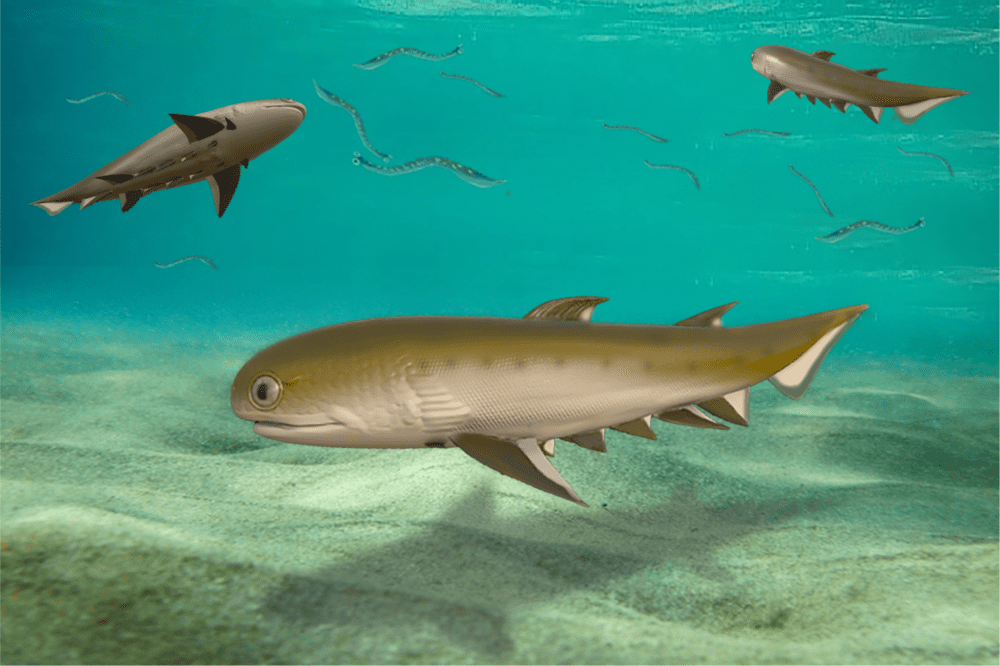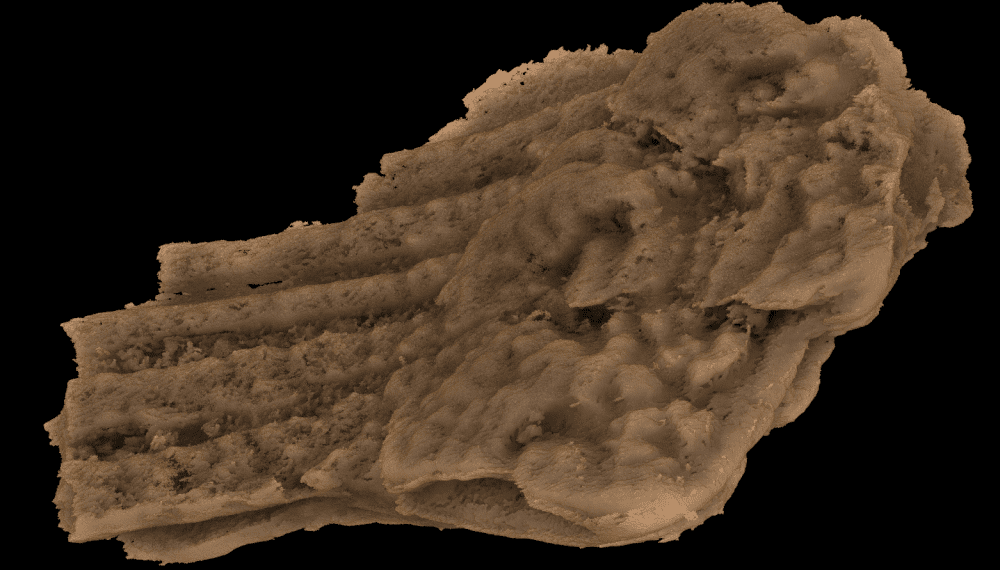An ancient shark with paired spines and bony armor is our earliest jawed ancestor, dating back to 439 million years. It surprised scientists with its incredibly advanced age, toppling the previously oldest known acanthodian by 15 million years.
The Paleozoic fossil was retrieved from bone bed samples of the Rongxi Formation at a site in Shiqian County of Guizhou Province, South China. It presented something of a puzzle for researchers on the discovery, as it was collected in the form of thousands of skeletal fragments which had to be pieced back together.
The resulting specimen has been named Fanjingshania renovata, after the UNESCO World Heritage Site Fanjingshan. In life, it was a bizarre fish kitted with bony armor and paired fin spines – which would’ve meant it looked pretty different from the sharks we know today.
Fanjingshania is extra special not just in being so old, but also in that it has enabled researchers to glean insights into anatomy far beyond what we’re normally able to deduce from such ancient fossils.

Life reconstruction of Fanjingshania renovata. Image credit: FU Boyuan and FU Baozhong
“This is the oldest jawed fish with known anatomy,” said Professor ZHU Min from the Institute of Vertebrate Paleontology and Paleoanthropology (IVPP) of the Chinese Academy of Sciences, in a statement.
“The new data allowed us to place Fanjingshania in the phylogenetic tree of early vertebrates and gain much needed information about the evolutionary steps leading to the origin of important vertebrate adaptations such as jaws, sensory systems, and paired appendages.”
The specimen is also unusual in that its bones exhibit traits more commonly seen in bony fish or other animals, like us. What makes this so bizarre is that Fanjingshania hails from the chondrichthyans, a group of animals famous for their cartilage, not bone.
“This level of hard tissue modification is unprecedented in chondrichthyans, a group that includes modern cartilaginous fish and their extinct ancestors,” said lead author Dr Plamen Andreev, a researcher at Qujing Normal University. “It speaks about greater than currently understood developmental plasticity of the mineralized skeleton at the onset of jawed fish diversification.”

Fragment of the pectoral dermal skeleton (part of a pectoral spine fused to shoulder girdle plate) of Fanjingshania renovata shown in ventral view. Image credit: Andreev, et al.
The working hypothesis is that Fanjingshania’s unusual traits may be explained by the fact that it could represent an early evolutionary branch of primitive chondrichthyans. If true, it would be big news for our understanding of the origins of jawed fish, placing it around 455 million years ago to a time known as the Ordovician.
“The new discovery puts into question existing models of vertebrate evolution by significantly condensing the timeframe for the emergence of jawed fish from their closest jawless ancestors,” concluded Dr Ivan J. Sansom from the University of Birmingham. “This will have profound impact on how we assess evolutionary rates in early vertebrates and the relationship between morphological and molecular change in these groups.”
This study was published in Nature.
Source Link: Our Earliest Jawed Ancestor Was A Spiky Shark That Lived 439 Million Years Ago